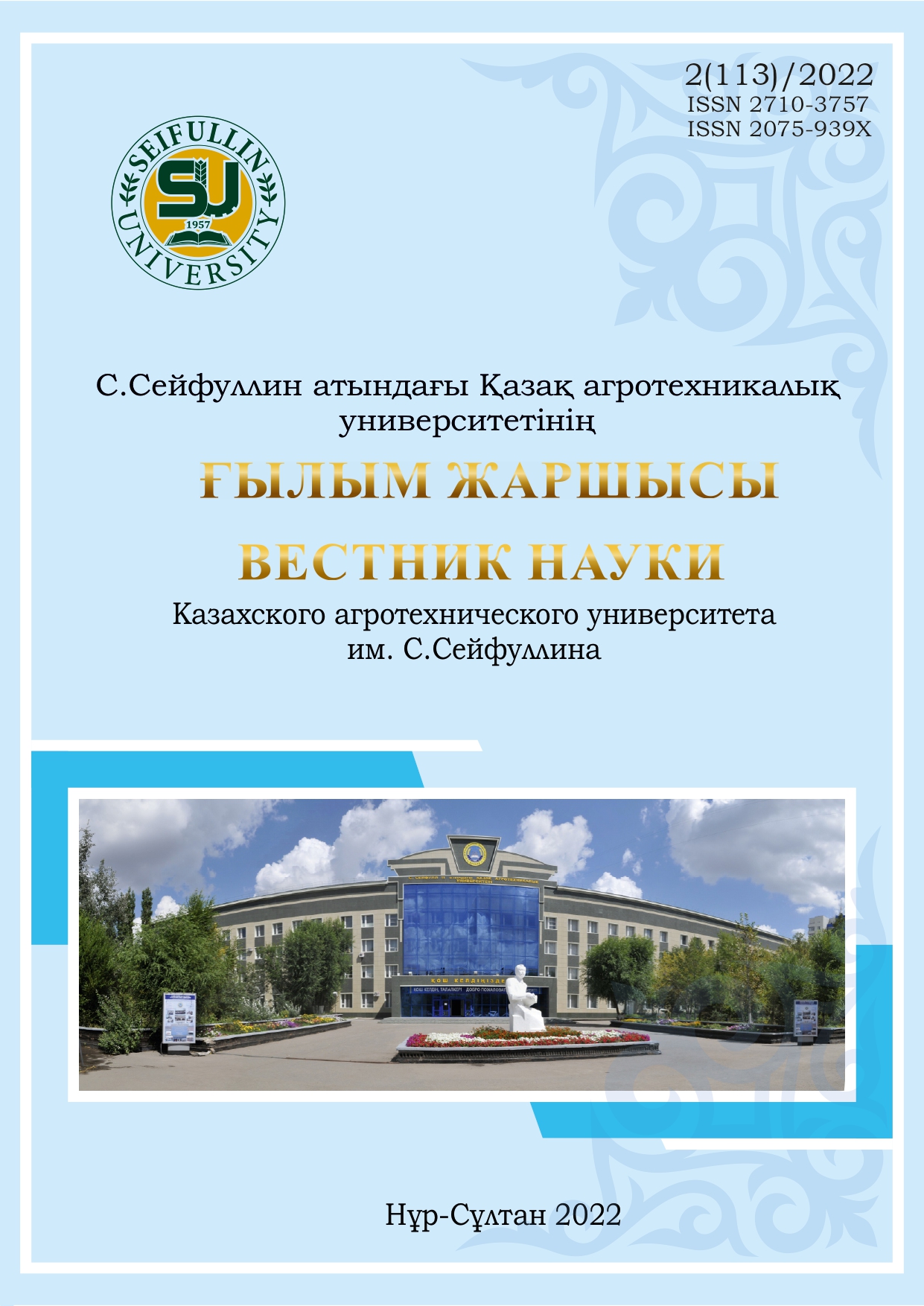PHYTOPHAGES IN THE AGROCENOSIS OF SPRING WHEAT IN THE PAVLODAR REGION
DOI:
https://doi.org/10.51452/kazatu.2022.2(113).955Ключевые слова:
wheat, phytophages, agrobiocenosis, phases of wheat development, Pavlodar region.Аннотация
To prevent losses of wheat yield from pests, it is necessary to update information on the patterns of formation of the phytosanitary situation in agrobiocenoses, according to which protective measures are planned and organized. In order to assess the phytosanitary situation of spring wheat crops, studies were carried out in the Pavlodar region, as one of the main regions of the republic for the production of grain of this crop. The paper reflects monitoring data on the phytophages population of spring wheat crops in the main grain-sowing areas of the Pavlodar region. The species composition of cereal crop pests that have a direct effect on productivity, qualitative and quantitative indicators of agricultural crops has been established. The obtained results showed that starting from the germination and up to the stem elongation phase, cereal crops were colonized by latent-stem pests and Phyllotreta vittula. Haplothrips tritici, Psammotettix striatus and Trigonotylus ruficornis dominated in the stem elongation and heading phases. Schizaphis graminum, Haplothrips tritici in two forms (larvae and adults) and Laodelphax striatella dominated in the phase of grain formation-filling and milk development phase. The study showed that during the initial phases of wheat development, the majority of pests develop and feed on wild weed plants, subsequently migrating to the cereals.

